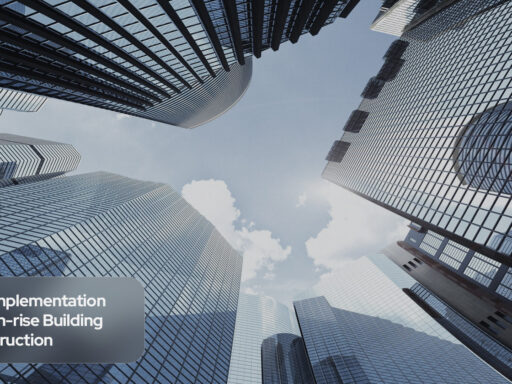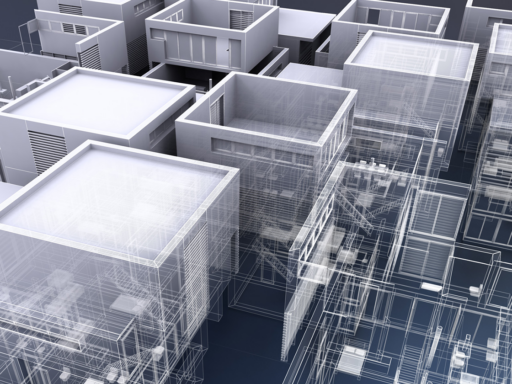Introduction
The global market for Smart Cities estimated at US$741.6 Billion in the year 2020, is projected to reach a revised size of US$2.5 Trillion by 2026 , growing at a CAGR of 22.5% over the analysis period.
We’ll explore how BIM technology transforms the way smart cities are designed, built, and managed.
Highlights
- Understanding the concept of urban management and its significance in ensuring sustainable growth.
- Exploring the application of BIM in creating digital models of entire cities, known as digital twins.
- Uncovering the benefits of integrating BIM and Geographic Information Systems (GIS) for urban planning and development.
The Significance of Urban Management
When we talk about urban management, we’re referring to the comprehensive approach to planning, governing, and regulating cities to address the challenges of population growth and ensure access to essential efficiency in smart cities. As Natalia Panici explains, it encompasses policies, programs, and practices aimed at improving human settlements and fostering sustainable development.
“City management seeks to ensure that population growth is matched by access to basic infrastructure, shelter, and employment among other things.” – Natalia Panici, Architect.
In essence, urban management is about creating thriving, livable cities that can support the needs of their residents while promoting economic growth and environmental sustainability.
BIM: A Game-Changer for Urban Planning
BIM, known as Building Information Modeling, is revolutionizing urban planning and design. With the advantages it offers in smart cities, BIM has become an essential tool for creating safer, sustainable, and more integrated urban environments.
- BIM allows professionals to make informed choices, minimizing the waste of resources and optimizing construction time and costs.
- The implementation of BIM in smart cities helps solve the challenges posed by growing urbanization.
- The integration of BIM and GIS enables intelligent connections between buildings and infrastructures, enhancing the efficiency of transport systems and public services.
By adopting BIM software and collaborative platforms, urban planners can streamline their workflows, improve communication and coordination among stakeholders, and ultimately create more sustainable and livable cities.
The Synergy of BIM and GIS
By combining the power of BIM and GIS, you can create intelligent connections between buildings and infrastructures, such as transport systems and public services. This integration allows for the potential integration with artificial intelligence systems, enabling more informed choices and minimizing the waste of resources.
Additionally, a governmental framework and concrete standards are essential to accelerate the adoption of BIM and GIS in Smart Cities. By emphasizing the potential of BIM and the opportunity it offers to link different data sets, wider city development can be facilitated.
“BIM and GIS integrations empower users to introduce geographic context within a project to assess the environmental impact, collect and analyze data from the field, and improve communication with stakeholders.” – Natalia Panici, Architect.
By harnessing the combined capabilities of BIM and GIS, urban planners gain a comprehensive understanding of the spatial and non-spatial aspects of urban environments, paving the way for informed decision-making and sustainable development.
The Benefits of BIM for City Management
The Smart Cities market is experiencing significant growth worldwide. In the U.S., the market is estimated at US$233.9 Billion in 2021, while China is projected to reach a market size of US$602.7 Billion by 2026. Other countries like Japan and Canada are also expected to see substantial growth in the smart cities market.
North America, Europe, and Asia-Pacific are the regions with the highest adoption levels in smart cities technology. Developed nations like the US, Japan, Canada, and Western European countries are leading the way, but developing nations like China, India, South Korea, and Brazil are actively pursuing the smart city model as well.
By utilizing BIM, cities can improve their operational efficiency and effectively address the challenges posed by urbanization. City management can enhance multi-stakeholder cooperation and reduce costs, it allows for better exchange of information between different parties involved in urban development projects.
It enables cities to tackle societal issues such as climate change, aging infrastructure, housing affordability, traffic growth, and congestion. BIM also promotes better communication and cooperation between different industries involved in urban development.
In urban planning, BIM offers features like clash detection, saving time and money while optimizing design for functionality and sustainability. It enables data integration for informed decisions based on accurate information.
“With BIM collaboration, accuracy, early error detection, and more, the end-to-end process of planning and building becomes highly streamlined with each stakeholder aware of the project element dependent on them.” – Natalia Panici
Conclusion
BIM technology revolutionizes urban planning by providing a powerful tool for designing and managing smart cities. Its ability to create detailed 3D models allows visualization and analysis of various infrastructure aspects. Benefits include improved collaboration, enhanced decision-making, and increased project delivery efficiency.






